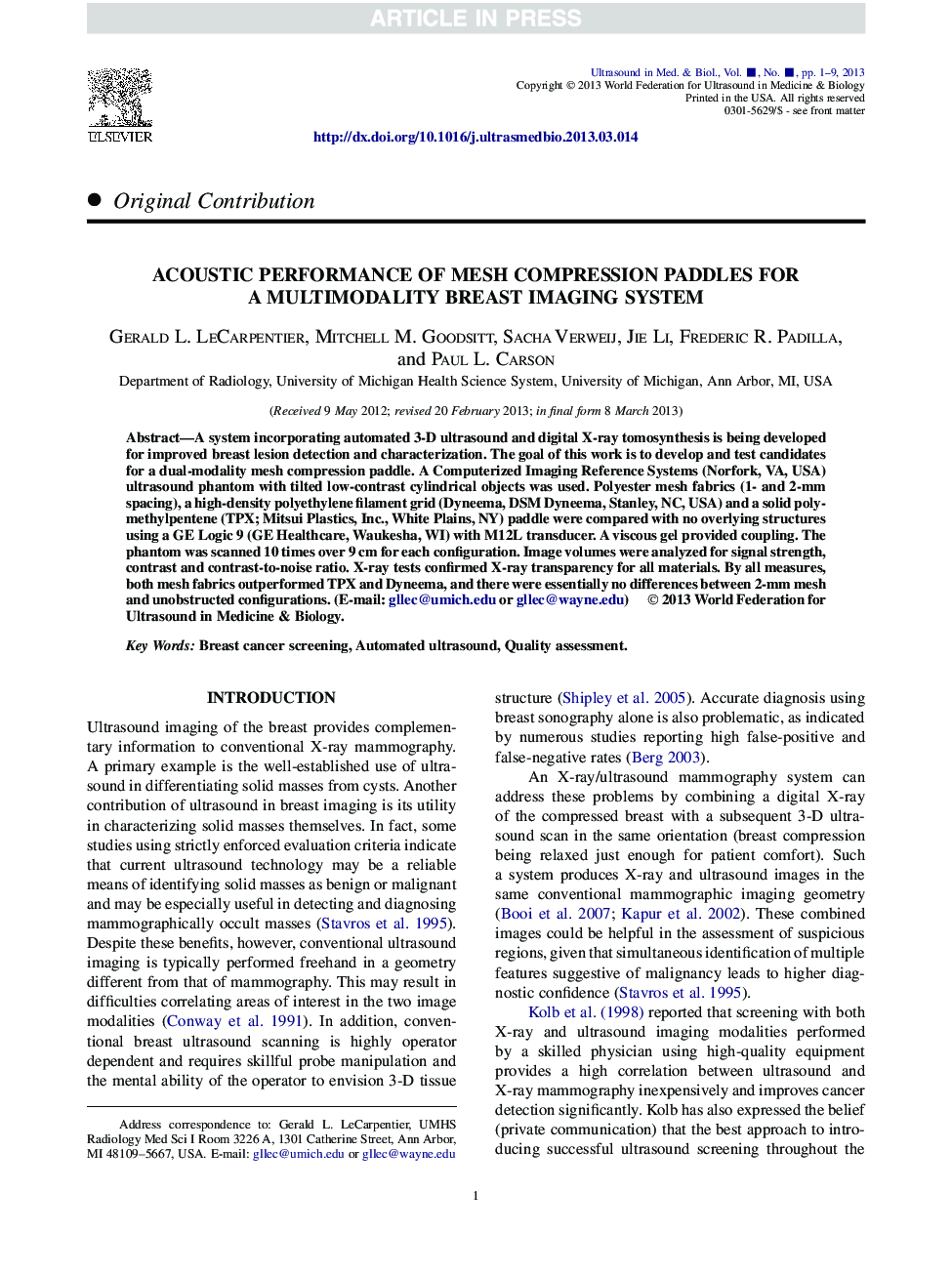| Article ID | Journal | Published Year | Pages | File Type |
|---|---|---|---|---|
| 10692012 | Ultrasound in Medicine & Biology | 2014 | 9 Pages |
Abstract
A system incorporating automated 3-D ultrasound and digital X-ray tomosynthesis is being developed for improved breast lesion detection and characterization. The goal of this work is to develop and test candidates for a dual-modality mesh compression paddle. A Computerized Imaging Reference Systems (Norfork, VA, USA) ultrasound phantom with tilted low-contrast cylindrical objects was used. Polyester mesh fabrics (1- and 2-mm spacing), a high-density polyethylene filament grid (Dyneema, DSM Dyneema, Stanley, NC, USA) and a solid polymethylpentene (TPX; Mitsui Plastics, Inc., White Plains, NY) paddle were compared with no overlying structures using a GE Logic 9 with M12L transducer. A viscous gel provided coupling. The phantom was scanned 10 times over 9 cm for each configuration. Image volumes were analyzed for signal strength, contrast and contrast-to-noise ratio. X-ray tests confirmed X-ray transparency for all materials. By all measures, both mesh fabrics outperformed TPX and Dyneema, and there were essentially no differences between 2-mm mesh and unobstructed configurations.
Related Topics
Physical Sciences and Engineering
Physics and Astronomy
Acoustics and Ultrasonics
Authors
Gerald L. LeCarpentier, Mitchell M. Goodsitt, Sacha Verweij, Jie Li, Frederic R. Padilla, Paul L. Carson,
